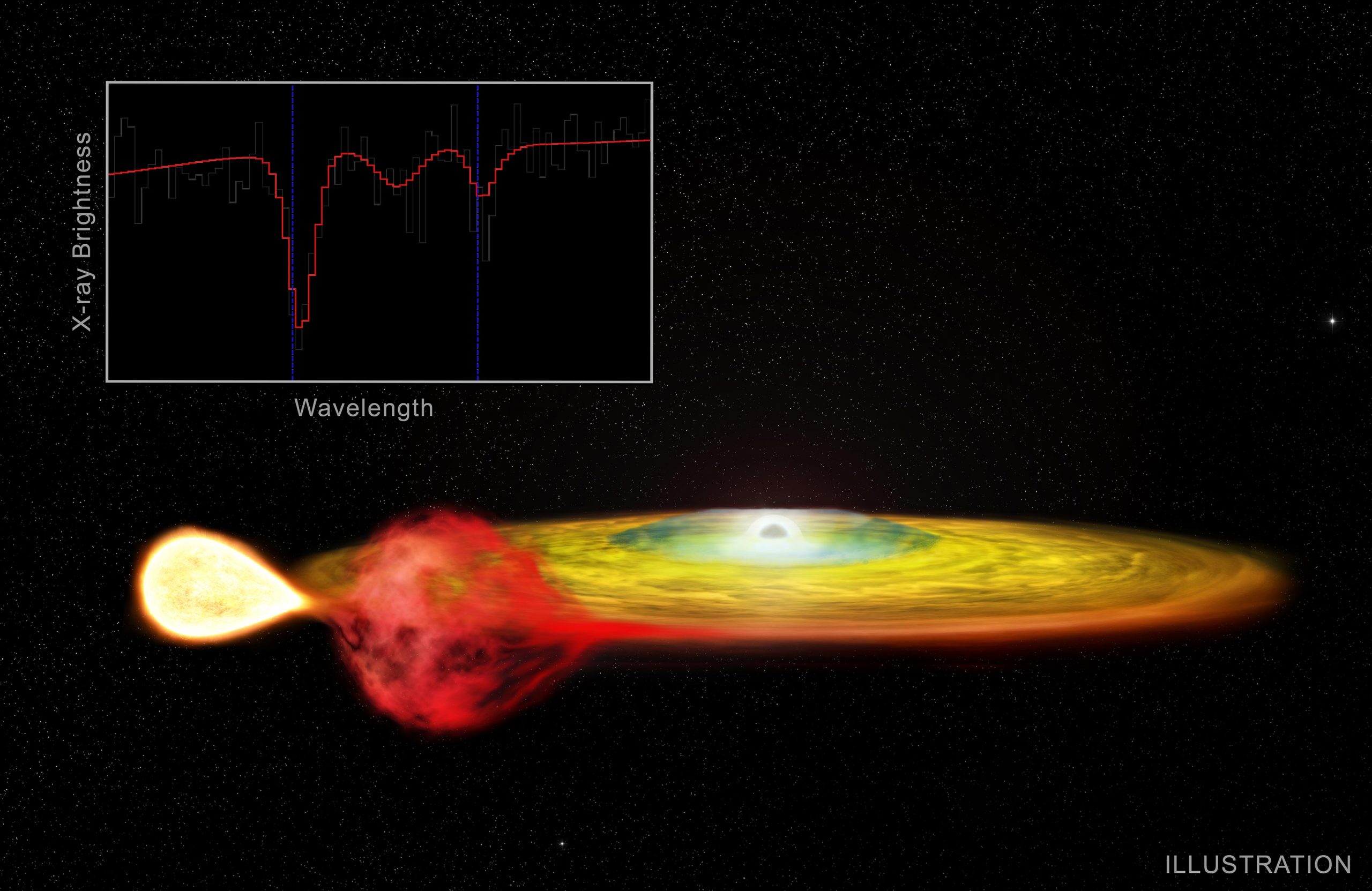Photo credit: NASA / CXC / M. Weiss
What do Albert Einstein, the Global Positioning System (GPS), and a pair of stars 200,000 trillion miles from Earth have in common?
The answer is an effect from Einstein’s general theory of relativity, the so-called “gravitational redshift”, in which the light is shifted to reddish colors due to gravity. Using NASAAt the Chandra X-ray Observatory, astronomers discovered the phenomenon in two stars orbiting each other in our galaxy, approximately 29,000 light years (200,000 trillion miles) from Earth. While these stars are very distant, gravitational redshifts have a noticeable impact on modern life as scientists and engineers need to consider them to provide accurate positions for GPS.
While scientists have found undeniable evidence of gravitational redshifts in our solar system, it has been difficult to observe them in more distant objects in space. The new Chandra results provide compelling evidence of gravitational redshift effects in a new cosmic environment.
The fascinating 4U 1916-053 system contains two stars in a remarkably narrow orbit. One is the core of a star, whose outer layers have been removed, leaving a star that is much denser than the Sun. The other is one Neutron star, an even denser object that is formed when a massive star collapses in a supernova explosion. In this artist’s impression, the neutron star (gray) can be seen in the middle of a disk of hot gas that has been pulled away by its companion (white star on the left).
These two compact stars are only about 215,000 miles apart, roughly the distance between the Earth and the Moon. While the moon orbits our planet once a month, the dense companion star whips around the neutron star in 4U 1916-053 and completes a full orbit in just 50 minutes.
In the new work on 4U 1916-053, the team analyzed X-ray spectra – that is, the amounts of X-rays at different wavelengths – from Chandra. They found the characteristic signature of the absorption of X-rays by iron and silicon in the spectra. In three separate observations with Chandra, the data show a sharp drop in the amount of X-rays detected near the wavelengths at which the iron or silicon atoms are expected to absorb the X-rays. One of the spectra showing absorption by iron is included in the main graph, and an additional graph shows a spectrum with absorption by silicon.
The wavelengths of these characteristic signatures of iron and silicon were, however, shifted to longer or more reddish wavelengths compared to the laboratory values found here on Earth (shown in dashed lines). The researchers found that the shift in absorption features was the same in each of the three Chandra observations, and that it was too large to be explained by movement away from us. Instead, they concluded that this was caused by the redshift of gravity.
How does this connect with general relativity and GPS? As predicted by Einstein’s theory, clocks run more slowly under gravity than clocks from a distant region with weaker gravity. This means that clocks on Earth observed by orbiting satellites run more slowly. In order to achieve the high precision required for GPS, this effect must be taken into account. Otherwise, there will be small time differences that will quickly add up and calculate inaccurate positions.
All types of light, including X-rays, are also affected by gravity. An analogy is that of a person going up an escalator, going down. The person loses more energy than if the escalator was stationary or moving up. Gravity has a similar effect on light, where loss of energy results in a lower frequency. Because light always travels at the same speed in a vacuum, the loss of energy and lower frequency means that light, including the signatures of iron and silicon, shifts to longer wavelengths.
This is the first strong evidence that absorption signatures are shifted to longer wavelengths by gravity in a star pair that has either a neutron star or a neutron star black hole. Strong indications of gravitational redshifts in absorption have already been observed from the surface of white dwarfs, with the wavelength shifts typically being only about 15% of those for 4U 1916-053.
Scientists say that a gaseous atmosphere covering the disk near the neutron star (shown in blue) is likely to absorb the X-rays and produce these results. The magnitude of the shift in the spectra enabled the team to calculate how far this atmosphere is from the neutron star using general relativity and assuming a standard mass for the neutron star. They found that the atmosphere is 1,500 miles from the neutron star, about half the distance from Los Angeles to New York and only 0.7% the distance from the neutron star to the companion. It probably extends several hundred miles from the neutron star.
In two of the three spectra there is also evidence of absorption signatures that have been shifted to even redder wavelengths, which corresponds to a distance of only 0.04% of the distance from the neutron star to the companion. However, these signatures are recognized with less certainty than those that are further away from the neutron star.
The scientists were given another Chandra observation period in the coming year to study this system more closely.
A paper describing these results was published in the August 10, 2020 issue of The astrophysical diary letters. The authors of the paper are Nicolas Trueba and Jon Miller (University of Michigan at Ann Arbor), Andrew Fabian (University of Cambridge, UK), J. Kaastra (Netherlands Institute for Space Research), T. Kallman (NASA Goddard Space Flight Center) in Greenbelt, Maryland), A. Lohfink (Montana State University), D. Proga (University of Nevada, Las Vegas), John Raymond (Center for Astrophysics | Harvard & Smithsonian), Christopher Reynolds (University of Cambridge) and M. Reynolds and A. Zoghbi (University of Michigan).
Reference: “A red-shifted inner disk atmosphere and transient absorbers in the ultra-compact neutron star X-ray binary 4U 1916-053” by Nicolas Trueba, JM Miller, AC Fabian, J. Kaastra, T. Kallman, A. Lohfink, D. Proga J. Raymond, C . Reynolds, M. Reynolds and A. Zoghbi, August 11, 2020 The astrophysical diary letters.
DOI: 10.3847 / 2041-8213 / aba9de
arXiv: 2008.01083
NASA’s Marshall Space Flight Center administers the Chandra program. The Smithsonian Astrophysical Observatory’s CXC controls the science and flight operations of Cambridge and Burlington, Massachusetts.



